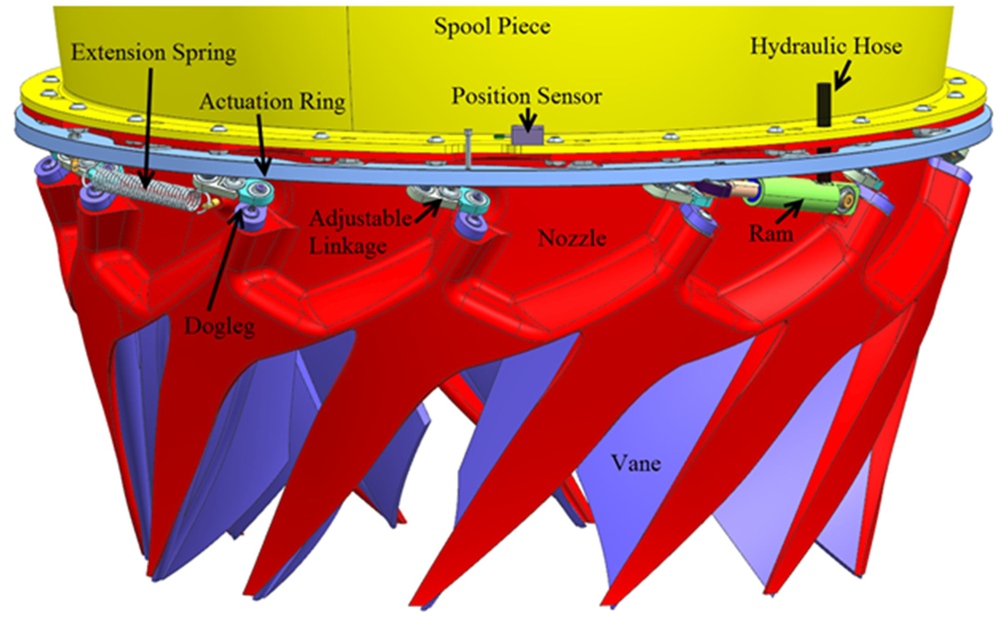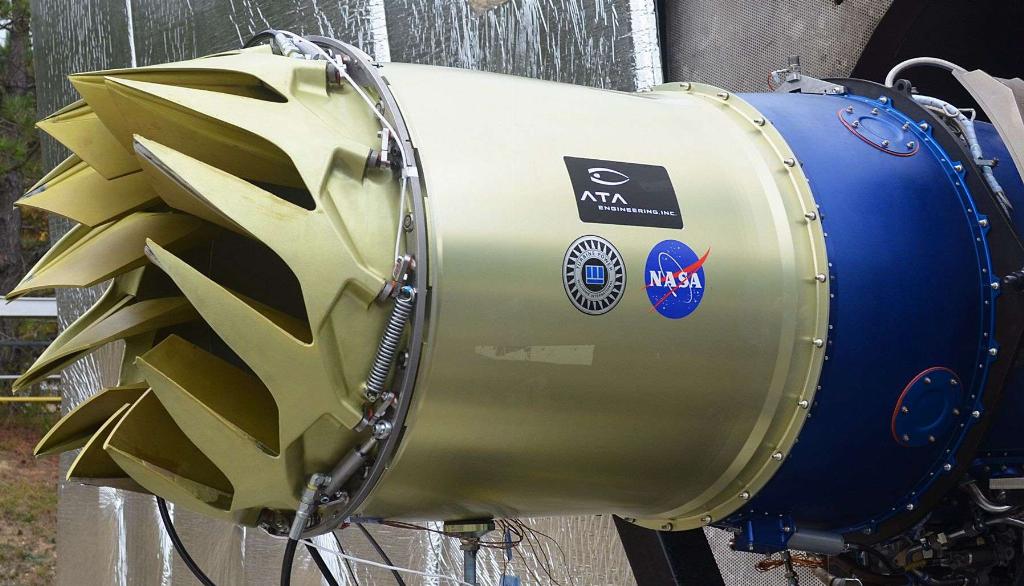A quieter future in aviation beckons

ATA Engineering’s Parthiv Shah and Siemens PLM Software discuss their partnership towards quieter skies by building a digital twin of a novel engine air-brake (EAB) concept.
ATA Engineering, in collaboration with NASA GRC, Williams International and the Massachusetts Institute of Technology (MIT) has developed a novel engine air-brake (EAB) concept that will pave the way for quieter aircraft.
The EAB is a unique drag device that was conceived at MIT as a ram air-driven nacelle with a stationary set of turning vanes generating a swirling exhaust flow from the engine. With funding from the NASA Small Business Innovation Research (SBIR) programme, ATA Engineering has developed and brought this technology to life in the form of a deployable swirl vane exhaust nozzle. STAR-CCM+ and NX, tools in the Simcenter Portfolio from Siemens PLM Software, played a key role in the design of the EAB, accelerating the readiness of the technology by creating and validating a digital twin before building the prototype.
Using NASA’s Technology Readiness Level (TRL), a measurement system to assess the maturity level of a particular technology, ATA has now advanced the EAB concept to TRL level 6 – a fully functional prototype. TRL numbers run from 1-9 with level 1 pertaining to basic principles and conception of the idea and level 9 indicating a flight-proven system through successful mission operations.
The Engine Air-Brake concept
ATA’s EAB concept is an evolution of the MIT concept. The EAB is a deployable device for drag management in aircraft. Pressure drag is generated through swirling outflow from the engine’s propulsion system by reducing thrust. The EAB is stowed during flight, but deploys a swirl vane mechanism during landing, creating a swirling vortex from the jet engine exhaust flow. The constant flow of swirling air creates additional drag by reducing thrust and is sustained by the radial pressure gradient from the swirl vanes. The system enables a slower, steeper and acoustically cleaner approach/descent when engine thrust cannot be further reduced.

As with any design, changes somewhere always result in undesired effects elsewhere and this is more pronounced in aerospace design. As part of the TRL programme, design requirements and technical objectives for the EAB were identified first.
Rapid design generation
Parametric solid modelling with NX for Design from Siemens PLM Software was used to create the 3D CAD geometry of the EAB. This allowed rapid generation of designs with varying parameters based on aerodynamic performance. The various design parameters for the numerical simulation were: vane count (N), swirl angle (S), deployment rotation angle (R), chord length (L) and cut-out (area relief) depth (C).
One of the foundations for the maturation of the EAB technology is the analysis-driven design effort using STAR-CCM+ to quantify flow performance and operability and to predict the thermal operating environments of the design. With the power of computational fluid dynamics (CFD), design optimisation and powerful computing hardware, ATA was able to analyse the full aerodynamic design space before identifying the final design that met all the aerodynamic requirements in simulation.
The domain was discretised with polyhedral cells. Prism layers were used to capture the boundary layer flow. The final designs had a mesh count of 3 to 5 million cells. Total pressure and temperature were specified as boundary conditions at the fan, core and freestream inlet. Steady RANS simulations with ideal gas and k-ω SST turbulence model were carried out. Circumferentially periodic boundary conditions were used, enabling modelling of 1/7th of the upstream region. A mixing plane interface was used to cope with the non-uniformity of the flow emanating from the 14-lobe mixer. The reduction of the computational domain in this way enabled faster exploration of the design space. Full-annulus simulations were carried out on final designs to verify consistency and the performance prediction.
From the swirl velocity, it can be seen that the flow becomes axisymmetric about two nozzle diameters downstream of the vanes. The aerodynamic performance results from STAR-CCM+ were used to update the design parameters and iterate on the NX design. Exactly 150 different designs were evaluated and the best performing design was identified.
Analysis-driven design
ATA Engineering used Siemens PLM Software tools throughout this analysis-driven design process to define the final configuration. The multiphysics capabilities of STAR-CCM+ enabled performance and gap leakage analysis, thermal analysis with Conjugate Heat Transfer (CHT) modelling, unsteady loads calculation with Large Eddy Simulation (LES) capability and flutter assessment. Thus, a digital twin of the EAB was created which validated the aerodynamic performance of the final design. Structurally, NX Nastran from Siemens PLM Software was used for Finite Element Analysis (FEA), fatigue analysis and prediction of thermal/structural deformation.

Full-scale ground testing of the final EAB design was conducted at Outdoor Test Facility #2 (OTF2) at Williams International’s complex in Walled Lake, Michigan. The testing successfully confirmed the performance of the EAB prototype.
Testing confirmed the performance of the EAB as a function of the vane rotation angle, which had been predicted with the digital twin. STAR-CCM+ predictions agreed well with test results for all configurations, reinforcing the use of STAR-CCM+ as a valuable design tool to bring this new technology to life. A steep approach flyover analysis predicts a 1dB to 3dB reduction in noise on the ground, successfully confirming the performance of the EAB as a noise-reducing device.
With the initial success, desired next steps are ground testing to test the reliability and durability of the system and an eventual flight test demonstration. ATA Engineering hopes that future aircraft designs will incorporate the EAB, and that the device may also be retrofitted to existing aircraft. There may yet be a day in the future when the general population is lining up to live in close proximity to airports. Sounds crazy? Maybe not. Now that aircraft and airports can be quieter, very few other balcony views can match the sheer splendour of watching our fantastic flying machines take off and land all day.













